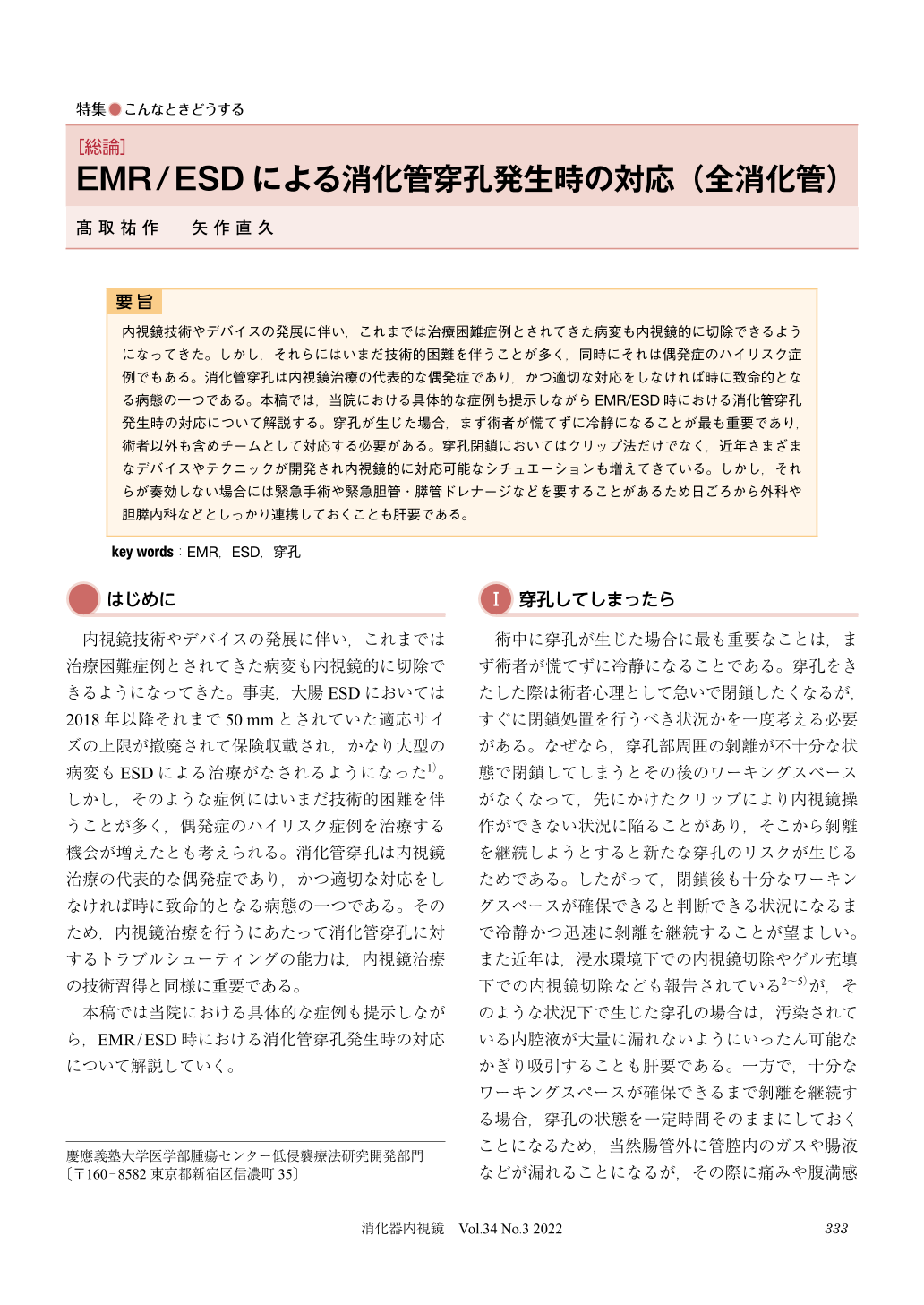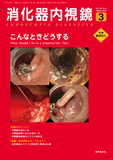Japanese
English
- 有料閲覧
- Abstract 文献概要
- 1ページ目 Look Inside
- 参考文献 Reference
要 旨
内視鏡技術やデバイスの発展に伴い,これまでは治療困難症例とされてきた病変も内視鏡的に切除できるようになってきた。しかし,それらにはいまだ技術的困難を伴うことが多く,同時にそれは偶発症のハイリスク症例でもある。消化管穿孔は内視鏡治療の代表的な偶発症であり,かつ適切な対応をしなければ時に致命的となる病態の一つである。本稿では,当院における具体的な症例も提示しながらEMR/ESD時における消化管穿孔発生時の対応について解説する。穿孔が生じた場合,まず術者が慌てずに冷静になることが最も重要であり,術者以外も含めチームとして対応する必要がある。穿孔閉鎖においてはクリップ法だけでなく,近年さまざまなデバイスやテクニックが開発され内視鏡的に対応可能なシチュエーションも増えてきている。しかし,それらが奏効しない場合には緊急手術や緊急胆管・膵管ドレナージなどを要することがあるため日ごろから外科や胆膵内科などとしっかり連携しておくことも肝要である。
It has become possible to endoscopically resect the lesions that used to be considered difficult to treat because of the development of endoscopic techniques and devices. However, they are still often technically challenging, and at the same time, they also have high-risk of complications. Perforation of the gastrointestinal tract is one of the most common complications of endoscopic procedures and can be critical if not recovered appropriately. In this section, we describe what should we do in the cases of perforation during EMR/ESD, showing specific cases in our institution. It is most important that the surgeon remain calm and not panic, and the team, including other surgeons, should respond for the perforation as a team. The situations that can be handled with endoscope is increasing because the clip closure method, various devices and techniques to recover the perforations have been developed in recent years. However, if these procedures are unsuccessful, emergency surgery or emergency biliopancreatic drainage may be required. Therefore, it is essential to cooperate with surgeons and biliopancreatic endoscopists.

© tokyo-igakusha.co.jp. All right reserved.


